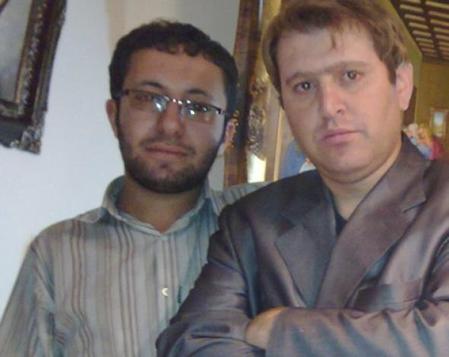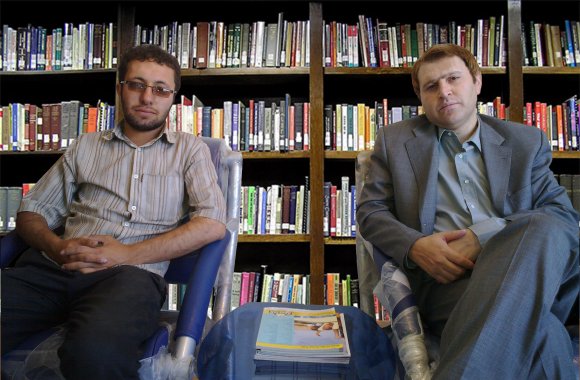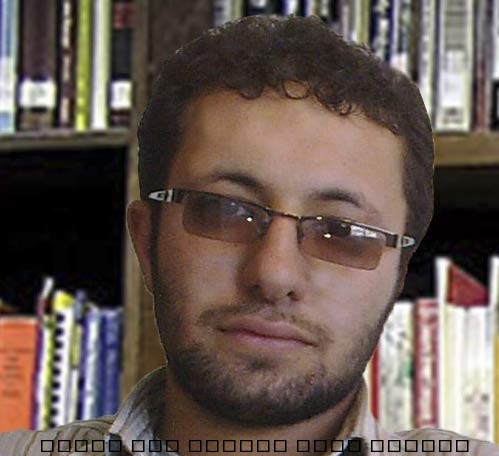
IRAN : THE NEW STRIKE OF THE BAZAAR & SAKINEH
10.11.2010
© IRAN-RESIST.ORG – October 13, 2010 | At the time of the first strike of the Bazaar on the last July, the regime which usually hides its violation of Human Rights told about some scheduled stoning sentence in order to divert people’s attention from the Bazaar which would be able to overthrow it if it managed to maintain a long strike. Westerners who repeat relentlessly their desire of an entente with the mullahs applied quickly this media manipulation : the proof is that they never tell about the strike of the Bazaar but they mention a lot Sakineh’s affair while the Bazaar is in a state of unrest. This is due to the fact that the United States need an Islamist ally [1] to control the Muslim street and that Europeans dispose of much advantageous oil contract in Iran. That’s why on the last August when the Bazaar tried to strike again, the affair was mentioned again by Tehran and the West. This affair which finally exhausted Western opinion has just been launched again with the so-called arrest of Sakineh’s son because the Bazaar is striking again and on the last week, the regime didn’t manage to break this strike ; it even contributed to its intensification.
20 days ago, on the 23 of September, gold and diamond traders, fabric and steel merchant of several big Iranian cities started a new strike. The three striking sectors don’t have at first anything related to each other but together they upset the most decisive economic sectors of the country : financial speculation but as well building industry or even garment manufacturing and sale, sectors which provide precarious jobs or second jobs which help most Iranians to survive. Such combination is not fortuitous ; the Bazaar is an organized social body and it obviously acted while it knew in advance that it would destabilize the society and thus the regime.
Such strong social mobilization started right after the regime’s UNO speech which made any dialogue impossible as it accused the United States of collusion in the 9/11 attack. This confirmed its refusal of any appeasement no matter what would be the sanctions and stupendous investment offers. The Bazaar which has been badly hit with sanctions then understood that it would get lost with such regime and that it was then necessary to overthrow it.
The sole solution was to call for a general strike such as in 1979 in order to stop the economy and then discontent thousands of Iranians and make them available for a demonstration under Khomeini’s banner. However Bazaaris remained cautious because for the past two years, each time the regime was about to refuse a new offer of reconciliation with the United States, it set fire to the Bazaar in order to dissuade Bazaaris from launching a general strike. This explains why the latter chose a partial strike that targeted the sectors which provide second jobs.
The regime understood immediately that it was endangered and even very endangered because it can’t set fire to the Bazaar for instance : this would stop the entire commercial activity and cause a chaos it wants to avoid. On the contrary it has to force people to resume work. This is what upsets it : it can’t manage it because more than a year ago it lost the support of young Basijis ---. Those militiamen coming from poor class were disappointed by the fact that to neutralize sanctions, the mullahs simply lowered salaries and raised prices in order to make people used to live with little income !
We may assess that the Bazaar’s strike has revealed the regime’s internal collapse. 10 days ago, the regime tried to break this strike which appeared more destructive than expected and resorted to its non-commissioned Pasdaran. The latter were quite sceptical. The regime tried to spur on its grass roots with the help of the mullahs who are responsible for the Friday pray. Only 2% of the mullahs rose the challenge. The same night, it set fire to the biggest processing centre of the Bazaar. The latter retaliated by extending its action to other cities. The regime then tried to make Bazaaris shrink back by raising the dollar rate by 70% which implied that it could cut its benefits : this didn’t make the Bazaar shrink back as it has henceforward to overthrow the regime to survive. Thus it implied that the Iranian Central Bank was about to go bankrupt and then that the regime would collapse. Henceforth the latter lowered the rates and on the Saturday 2 October (on the 9th day of the strike), it replaced this plan which caused a worsening of confidence crisis with a week of display of police strength with its last devotes in order to restore its authority.
On the fourth day of this strength display (13th day of the strike), it spread the rumour of an attack of the gold and diamond sector of the Bazaar of Tehran by 200 of its henchmen. As they feared the sacking of their goods, Bazaaris reopened in order to be in their shops but they didn’t resume work. The media of the regime then announced the reprisal of work. But Bazaaris from Tehran denied such information and several other cities adhered to the strike which confirms the existence of some concerted action that strengthen gradually in order to avoid the involvement of every Bazaari and thus reduce the general cost. During this week, the regime took 3 other initiatives to impose its authority but every 3 actions appeared to be failures. On the Thursday 7 of October, the regime arrested several important Bazaaris. However the strike continued. On the Friday 8 of October, the regime asked to arrested Bazaaris to obtain the reopening of the Bazaar on the next day, Saturday 9 of October (1st day of the week in Iran). The regime which was supposed to restore its authority during this week lost its time and lost the face. Consequently it resumed its basic tactic by setting fire on the same Friday at 11 pm to a building located in the centre of the Bazaar in order to obtain its reopening on the Saturday 9 of October.
The firemen of the regime often left in the past sections of striking Bazaaris burning and told then that the access was too difficult. This time they brought the fire under control and even prevented it from spreading to neighbouring areas. Then they published a communiqué in order to tell they were pleased that they intervened quickly or else the entire Bazaar would have burnt !
On the Saturday 9 of October, gold and diamond traders as well as others had to open again. But not only they didn’t open and stood without working but also they resorted to their initial action by letting their iron curtain down. Additionally, traders from shoe section stopped working and thus destabilized jobs of the leather industry. Consequently the regime urged the arrested Bazaaris to call strikers for the reopening of shops the day after at the latest. Further to such call, iron curtains remained down.
In the absence of any reopening, the regime lost again some of its authority. Then it resorted to the sole mean it masters again, i.e. propaganda, by controlling information in order to avoid any radicalisation and make its adversary less determined. It wanted especially to hide to Westerners the fact that it has been unable to restore the order in order to deprive this strike from expected foreign support. The regime revived Sakineh’s affair with the arrest of 2 German journalists who interviewed Saijad, Sakineh’s son, and it spread the rumour of the arrest of the latter.
Westerners were in on it via BHL, the leader of this media obstruction on the benefit of the United States. Some pretend that Saijad (18 years old) was arrested precisely when he was on the phone with BHL. The police would have intervened in order to know what they were telling to each other. This has no sense because the regime is used to listen to the phone conversations of every suspect people and whenever words get unpleasant, it interrupts communication and even cut the line for several days. The fact to assume an intervention appears as a deliberate act. Besides on this occasion, we could for the first time 2 photos of Saijad. Those photos are very interesting. First of all, on the first one, a bearded man with sunglasses (and a striped shirt) is described as Saijad. He stands beside a strange blond-haired man who is introduced as his lawyer, Houtan Kian.
© WWW.IRAN-RESIST.ORG

© WWW.IRAN-RESIST.ORG
This young bearded man is obviously more than 18 : he seems to be rather 30. However it’s difficult to form a clear picture of his age or of his features because the other photograph that is published on the website which is in charge of the promotion of Sakineh’s affair is actually a photomontage made with the face of the first photo.
© WWW.IRAN-RESIST.ORG

© WWW.IRAN-RESIST.ORG

© WWW.IRAN-RESIST.ORG
Such as we can notice it, the face was cut and pasted (in a shoddy way) on a body wearing the same shirt and sat on the side of the blond-haired lawyer on covered camping chairs in a library scenery ! What does this mean ?
But the regime did more than reviving fuss about Sakineh : as long as it lacks of militiamen to restore order, it asked children to sneak on among their families. It did the same things when it took the power in 1980. This has never been a success and here is its merit : the regime doesn’t know what to do and it uses again models which caused rejection among its supporters in the 80’s. Such as the demon in the exorcist, it gives anything whenever it feels lost.
The day before yesterday and yesterday (Monday 11 and Tuesday 12 of October), according to our information, the strike was followed with unprecedented zeal especially in the textile section, the clergy’s historical ally. Terror regime doesn’t terrorise anymore ; it lost ground. This just depends on a sole thing : Western refusal to drop the regime.
© WWW.IRAN-RESIST.ORG
The french version of this article :
![]() Iran : La grève du Bazar se radicalise (J+20)
Iran : La grève du Bazar se radicalise (J+20)
![]() (13 OCTOBRE 2010)
(13 OCTOBRE 2010)
All our articles in English...
| Mots Clefs | Résistance : Grèves |
| Mots Clefs | Résistance : Menace contre le régime |
[1] Washington needs an Islamist ally to control Muslim fundamentalists and especially the Shiite ones. This would give it the possibility firstly to shake the Kashmir region in order to shake then the Muslim Chinese of the oil-rich and mining Xinjiang region. Secondly it would be able to push Saudi Shiites to declare their independence in order to separate Shargieh region (where there is the totality of Saudi oil resource) and punish the Wahhabis who have refused since 1996 to extend the oil exclusivity which was granted formerly to the United States.
 Facebook
Facebook Twitter
Twitter